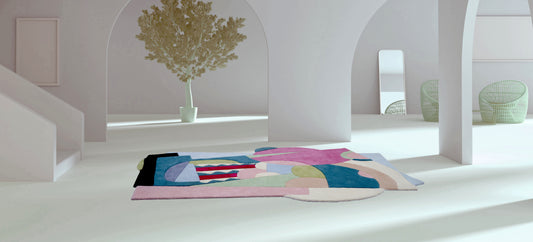
Georges Valmier (11 April 1885 – 25 March 1937) was a multidisciplinary French painter whose involvement was not only restricted to the field of art but also encompassed music and even theatre. So what are his significant artistic contributions that set Georges Valmier apart from other painters of his time?
Influence
Georges Valmier had the privilege of being born into a family that valued art, painting and music. He took his first lessons in the art of music, under the expertise of his father who was a music teacher and also conducted the military band. Valmier’s passion in art was encouraged from a very young age but his professional training began when he enrolled at the École des Beaux-Arts. There he studied under Luc-Olivier Merson, but was discontent with the program, believing it to be too rigid and formal. The works of Paul Cézanne inspired him to leave the Academy and pursue his own interpretation of art. Valmier adopted the Impressionist style in his initial works, which he then abandoned for a Cubist approach. He created portraits, still-lifes and even captured the landscapes of Montmartre employing geometric shapes typical for Cubism, and he did so without knowledge of the Cubist movement.
Life as an Artist
It was during the outbreak of the First World War that he was drafted to serve in the military, where he made his acquaintance with the painter Albert Gleizes. Valmier didn’t give up his art even during the war, he would capture everyday military scenes using either pencil, ink or watercolour in his sketchbooks.
After WW1, Georges Valmier surfaced as a prolific painter of the Cubist style.

It was his renditions of delicate collages that drew the public’s gaze towards him. His works remarkably differed from those of other Cubist artists like Picasso, Braque and Gris. But the most noticeable distinction was Valmier's rejection of the conventional muted colour palettes in favour of a dramatic use of colour. He used colour as a means of expression because he believed that "colour takes on its true meaning, its own life."
His art style underwent another transition, the final stage of his artistic journey in which he took on a looser Abstractionism. In the early 1930s, Valmier participated in several expositions in New York, Vienna, Warsaw and Paris. Supported by Gleizes, Hans Arp and František Kupka, Valmier founded the Abstraction-Création group and played an active role during its functioning.
Other Contributions
Among the lesser known facts about this artist is the knowledge that Valmier was also a musician. He is believed to have performed the works of composers like Debussy, Ravel, Fauré, and Satie not only in churches but also at significant concerts. As a musician he also considerably influenced the style and career of composer André Jolivet.

Valmier was also a designer of sets and costumes for theatre and ballet. One of his notable contributions in this aspect was made towards Filippo Tommaso Marinetti’s performances at the Art and Action Theatre among other projects. His experiments in this field resulted in the publishing of the collection of set-decorative motifs Decorations and Colours in 1930.
The last monumental commission that Valmier undertook but was unable to finish, was for the 1937 Exposition Internationale in Paris. It was then used for the decoration of the theatre of the Palace of Railways. Valmier died a premature death in Paris in 1937, leaving behind an impressive collection of 300 oil paintings and a great number of performance sets. A year after his passing, his works were gathered by Hilla Rebay for the Solomon R. Guggenheim Museum, where they can still be found today.
Georges Valmier was truly a revolutionary painter whose works comprise the most significant movements in the history of modern painting. His artistic journey and creations continue to inspire many, including us at Ruggism. Our Valmier collection of handmade rugs honours the works of Georges Valmier and embodies his perception of art with its use of vibrant colours working in unison with bold shapes. You can check out our Valmier collection here.









